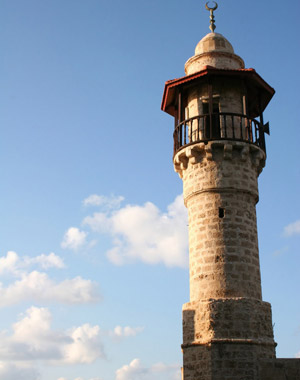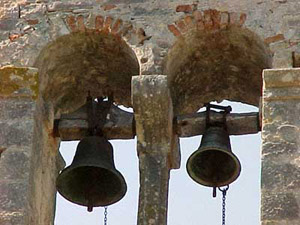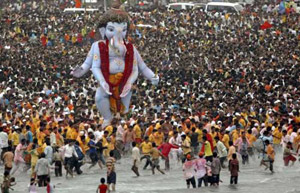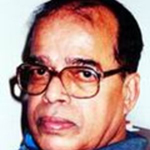Off Beat (05): Why Not Surrender Irritants for Harmony?
By John B. Monteiro
Bellevision Media Network
Buried was the bloody hatchet;
Buried was the dreadful war-club;
Buried were all warlike weapons,
And the war-cry was forgotten.
Then was peace among nations.
- Henry Wadsworth Longfellow, US poet and scholar (1807-1882)
16 July 2012: What applies to nation states applies equally to entities within the state such as religious and linguistic communities and, as in India, the states within the Union which constantly fight over boundaries and natural resources like river water. Every riot or conflict over these ends with calls for peace meetings at various levels. These meetings turn into mutual-blame platforms and for complaints against each other. What is convened for peace ends up in further bitterness, despite pretended show, for the consumption of media, of forgiveness, reconciliation and promise of peace from then on.
Against this background, we can usefully take a look at some of the prevailing irritants in the practices of major religions in India with a view to surrendering them voluntarily in the interest of promoting communal harmony.
 Let us look at the Muslim call for prayers, called Azan, which is given to the faithful five times a day. It is given from a high perch in the mosque, like the top rung of the minarets, so that it can be heard far afield. The Muslim calls for prayers follow the tradition of Jews and Christians where the bell was, and still is, in vogue. While the church bell peels with the ringer working on the rope connecting the bell on a lofty belfry, the Muslim priest exhorts his flock through his sonorous voice, often amplified by microphones and loudspeakers. Essentially he proclaims that he stands witness that Allah is the greatest, is the only one worthy of all worship and Mohammed is the true Prophet of Allah. He calls them to perform the prayer and achieve salvation. During the predawn Azaan, the priest adds that “Prayer is far better than sleep”.
Let us look at the Muslim call for prayers, called Azan, which is given to the faithful five times a day. It is given from a high perch in the mosque, like the top rung of the minarets, so that it can be heard far afield. The Muslim calls for prayers follow the tradition of Jews and Christians where the bell was, and still is, in vogue. While the church bell peels with the ringer working on the rope connecting the bell on a lofty belfry, the Muslim priest exhorts his flock through his sonorous voice, often amplified by microphones and loudspeakers. Essentially he proclaims that he stands witness that Allah is the greatest, is the only one worthy of all worship and Mohammed is the true Prophet of Allah. He calls them to perform the prayer and achieve salvation. During the predawn Azaan, the priest adds that “Prayer is far better than sleep”.
But, non-Muslims may prefer to sleep instead of praying. Their prayer time may be different and they would be entitled to sleep undisturbed even after daybreak. Then there may be old and sick people looking for undisturbed rest. Now there are even environmentalists and animal lovers who are passionately fighting for lowering noise levels.
Let us go back to history to look at Azaan in the proper perspective. Muslims in those days might have been living is small settlements where the Mulla’s timely call for prayers could have been apt and necessary. Let us also remember that it was not an age of watches and clocks. Today we have timing devices like alarm clocks and even wake-up call facility on telephones. The ubiquitously expanding mobiles have handy time/alarm feature. Also the geographic spread of Muslim faithful is different today. Many of them live in cosmopolitan cities in India, surrounded by adherents of other religions. It appears that in some cases, instead of the priest personally delivering the call, a pre-timed recorded cassette is used.
Therefore, the historical Azaan has lost its relevance and has become an avoidable irritant in some geographic contexts. While the original Azaan might have been an integral part of religious practice, the founding Prophet could not have foreseen voice amplifiers, loudspeakers and cassette recordings.
Azaan’s predecessor and today’s church bell, is mounted on a lofty belfry, high above the church ceiling and competing with the steeple. There are often multi-bells and certainly multi-functions compared to the Muslim Azaan. They call for prayers – morning, noon and evening. They also invite the flock for the Sunday mandatory service and optional daily Mass. They ring with joy for christenings and weddings and with sadness to announce deaths and funerals. They were peeled with gusto for coronation of kings and to welcome victorious armies on their return to the realm. Writers and poets down the ages have approvingly noted the tingling and tangling of church bells and their soothing musical – and, when appropriate, melancholy – sounds.
Mercifully, church bells are not amplified and their peeling is normally restricted to more civilized hours of the day. Yet, in  metros and towns the bells could disturb those working in night shifts, as in IT, and sleep during the day. The same applies to the aged and the ailing. Besides, church bells are also avoidable relics of the past. As noted earlier, watches and clocks are ubiquitous part of modern life. Even for announcements of deaths and funerals, the obituary columns of dailies and phone calls could be more specific means of communication. Besides, websites carry funeral details almost instantly, compared to overnight wait for following day’s newspaper as earlier. Some churches have rightly banned crackers to check noise pollution and vibration damage to structures. Such a ban or restriction can usefully be extended to church bells which have outlived their historic rationale.
metros and towns the bells could disturb those working in night shifts, as in IT, and sleep during the day. The same applies to the aged and the ailing. Besides, church bells are also avoidable relics of the past. As noted earlier, watches and clocks are ubiquitous part of modern life. Even for announcements of deaths and funerals, the obituary columns of dailies and phone calls could be more specific means of communication. Besides, websites carry funeral details almost instantly, compared to overnight wait for following day’s newspaper as earlier. Some churches have rightly banned crackers to check noise pollution and vibration damage to structures. Such a ban or restriction can usefully be extended to church bells which have outlived their historic rationale.
Hindu temple bells, though less noisy, are run more frequently at poojas and at the hands of individual devotees. Thus, they operate not to fixed timings and occasions, unlike in the case of Azaans and church bells. Then there are amplified discourses in pandals erected on public grounds. The dawn devotional songs are amplified. Then there are religio-cultural events. For instance, there are night-long Bayalatas (open-air dance-dramas) on epic and folklore themes and also Bhootakolas (devil/spirit dancing). Traditionally their noise levels were limited by vocal chords and just enough to reach the assembled audience for the event. But, now amplified loudspeakers have added a new dimension that, in the multi-religious context, could have avoidable irritation angle. The field dramas had their origin in the context of rural areas having no large meeting halls. Today there are halls of various capacities with public address systems in cities, towns and rural areas. So, there are good opportunities to shift the venues and perform during more reasonable hours of the day.
 Yet another factor common to all religions is processions. Most communal disturbances have been provoked by processions passing by mosques, temples and churches when the noise level and body language get heightened and vitiated, leading to provocation and retaliation. Neither processions nor the routes they should take are integral to any religious dogmas or rituals.
Yet another factor common to all religions is processions. Most communal disturbances have been provoked by processions passing by mosques, temples and churches when the noise level and body language get heightened and vitiated, leading to provocation and retaliation. Neither processions nor the routes they should take are integral to any religious dogmas or rituals.
There is room for introspection, restraint and tolerance. Most of these irritants are avoidable, without sacrificing the core dogmas or rituals, and their suo motu surrender could promote communal harmony. But, the approach should be voluntary. Lobbying and pressure result in resistance on the basis of rights, privileges, self-respect and prestige. Internal introspection and suo motu surrender is in conformity with a sense of responsibility and spirit of sacrifice for the common good. There should be competitive offers to surrender unwanted and outdated irritants which are not integral to dogmas and rituals of religions.
Ideally, the leaders of various communities - religious, linguistic or whatever – should periodically sit around a round table and come out with a list of irritants that they would surrender suo motu and without any conditions. Once started in the true spirit, the surrender movement can become infectious and addictive. Mother Teresa had said, in the context of love and charity, that we should give till it hurts. Similarly, we should identify and surrender irritants till it hurts – all for harmonious living.
Chew on this!

John B. Monteiro, journalist and author, is Editor of his website, www.welcometoreason.com (Interactive Cerebral Challenger) – with provision for instant response. Try responding!
 Write Comment |
Write Comment |  E-Mail To a Friend |
E-Mail To a Friend |
 Facebook |
Facebook |
 Twitter |
Twitter |
 Print
Print | Comments on this Article | |
| Philip Mudartha, Qatar | Mon, July-16-2012, 12:52 |
| Very timely and apt plea, presented without malice and emotion. Even as I wish, pray and hope for the surrender movement to take birth and overthrow the intolerant hegemony and false religiosity often seen today, I am pessimistic. This is one view which I hope I am proven wrong. | |




















